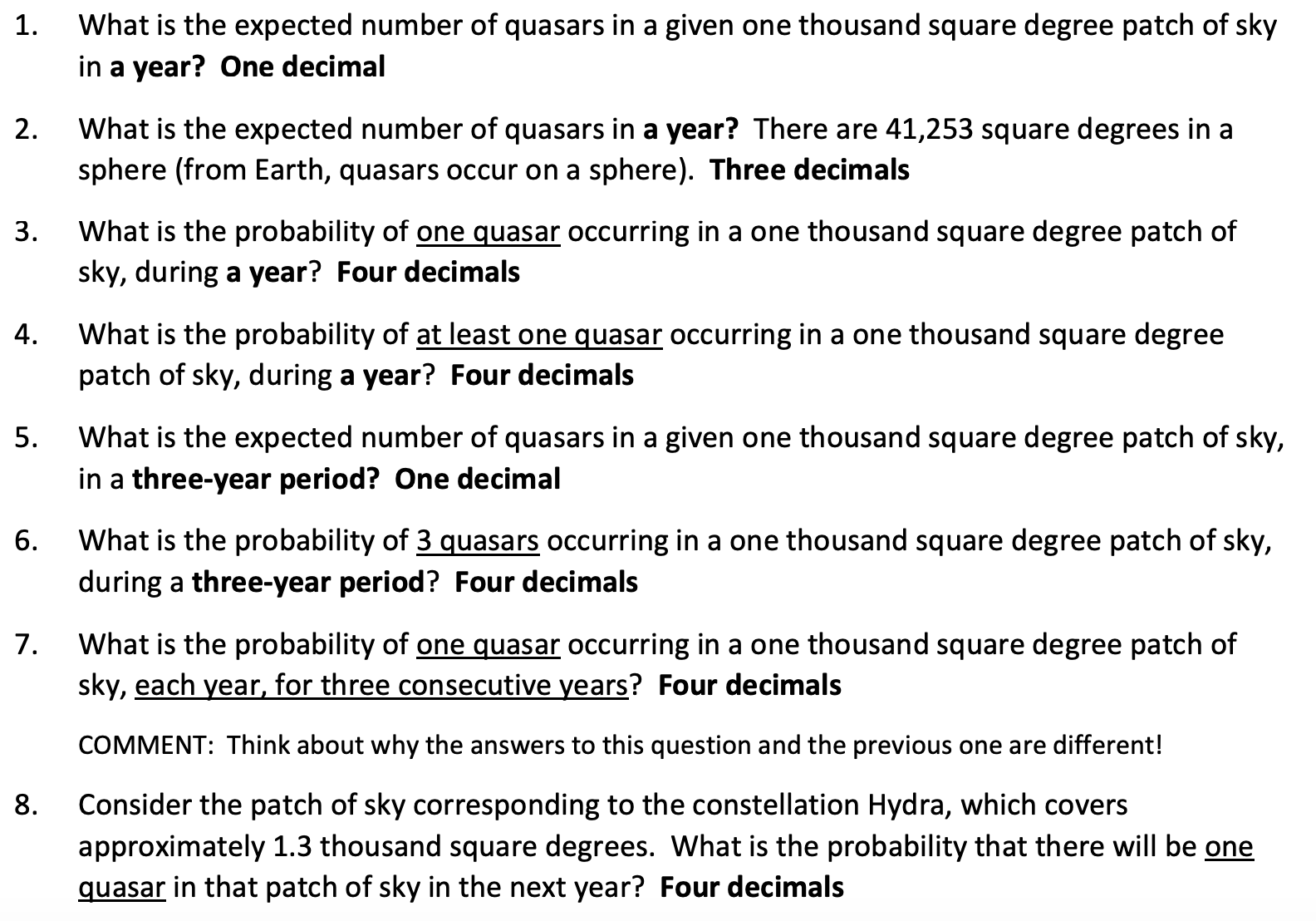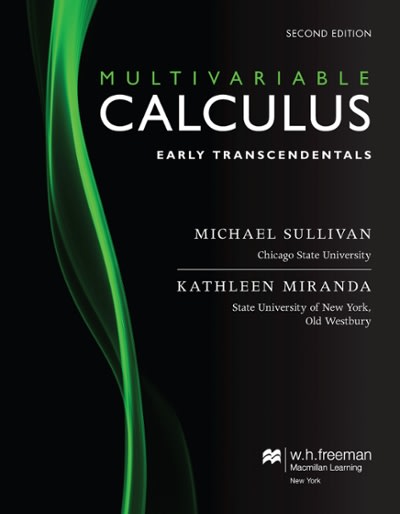Question
Quasars Light from quasars can reach Earth from the edge of the visible universe. Viewed from Earth, the sky can be divided into square degrees.
Quasars Light from quasars can reach Earth from the edge of the visible universe. Viewed from Earth, the sky can be divided into "square degrees". Assume quasars occur in a small patch of sky according to a Poisson process. ("Occurs" means "when the quasar first can be observed by astronomers".) On average, there are 2 quasars per year per thousand square degrees of sky. The numbers of quasars in non-overlapping patches of sky in a year are independent and the numbers of quasars in a patch of sky in non-overlapping periods of time are independent. The probability of simultaneous quasars is zero. NOTES: The square degree is a measure of solid angle. There are 41,253 square degrees in a sphere. Your professor has no idea whether the assumption of a Poisson process for quasar occurrence is realistic but the assumption seems reasonable because a quasar occurs at the center of a galaxy; the number of galaxies is very large (estimated to be one or two trillion); and the universe is essentially "flat", implying that at large scales, it looks the same in all directions. The value of the Poisson parameter was assumed for convenience in the question. We'd need an astronomer to give us a realistic estimate

Step by Step Solution
There are 3 Steps involved in it
Step: 1

Get Instant Access to Expert-Tailored Solutions
See step-by-step solutions with expert insights and AI powered tools for academic success
Step: 2

Step: 3

Ace Your Homework with AI
Get the answers you need in no time with our AI-driven, step-by-step assistance
Get Started


